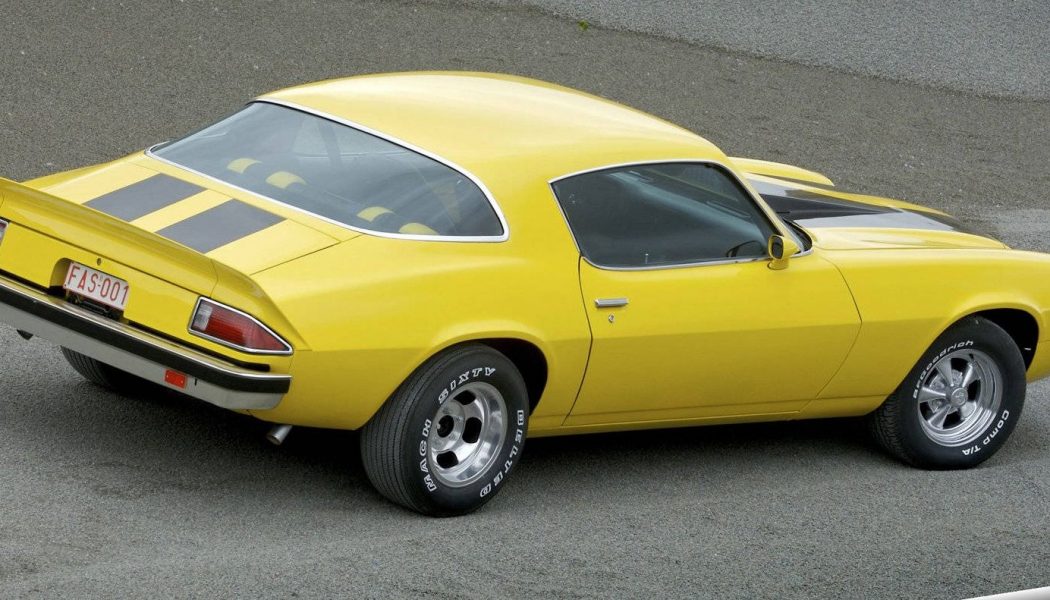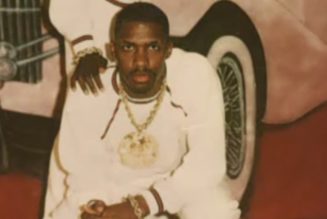Here’s an intro to the old school for the young generation of Roadkillers. This is the Crop Duster—a 440-engine-swapped 1970 Plymouth Duster that runs in the 11s—which was built for what today would be considered cheap for a vintage muscle car. It’s also the story of the resurrection of an old car that spent years wallowing in farm soil laden with sundry vegetal and animal residue.
“You’re still going to have 20 grand duplicating that car,” David Freiburger says in his trademark deadpan. “That’s the problem. That’s expensive.” But insofar that cubic dollars can be replaced by fanatic hoarding, ingenuity, and elbow grease, this is it. “The key to the whole thing—the reason why people think it’s cool—is the six pack scoop, Cragars, and stance. If it has the right look, you can get away with a lot, even with the rest of the car being junk.”
But the Crop Duster is reasonably fast, too. Its best quarter-mile without nitrous is 11.78 seconds at 115 mph. It’s in stark contrast to the trend of fussy restorations and high-dollar paint jobs, and although its shabby appearance is a nice disguise and a money saver, sharp-eyed gearheads see through the sun-baked rust job.
One Mopar Leads to Another…and Another…
The Crop Duster is a case study of what happens when one of the Roadkill project cars goes right in all the wonderfully wrong ways in a process that can best be called “accidentally on purpose.” The path to accidental success is long and can be traced back to Freiburger’s roots as a Mopar guy that led to his first big-block-swapped ’68 Dodge Dart that became famous as the Cheap Thrills Dart in HOT ROD magazine in 1995.
“The Cheap Thrills Dart was a ’68 Dart that I got out of Pick Your Part in Sun Valley, and then I bought a ’67 Imperial that had a later 440 in it,” Freiburger says. “It was like a ’68 440. Maybe it was a dealer replacement or something, I don’t know. So we took the 440 and the transmission out of the Imperial and put it in the Dart and did a bunch of stuff to it. That was back when we still used correction factors up at Los Angeles County Raceway. I think the thing only ever ran 13.10 at LACR, which corrected to like a 12.69 or something like that.” The car is remembered as the first truly butchered, dirt-cheap project in HOT ROD magazine, and for the twin hose clamps used as transmission mounts.
General Mayhem Reporting for Duty
The Crop Duster buildup episode started like many others: Find a serviceable chassis, load it up with stuff that happens to be lying around, then creatively derby the whee out of it before the legal department finds out.
The Duster started as a roller that Steve Dulcich bought 16 years ago for $700. Dulcich was the editor of Engine Masters magazine, a longtime friend of Freiburger’s, an accomplice in the Crop Duster episode of Roadkill, and the current co-host of both Engine Masters and Roadkill Garage on the MotorTrend App. He’s also traded cars with Freiburger like baseball cards, and two years ago, Dulcich swapped his Duster for a ’68 Dart Freiburger had lying around, which had also been Dulcich’s at one time. In fact, it had never even left its storage spot at Dulcich’s farm. Yes, it’s complicated. While pondering what to do for a new episode, Freiburger realized it was staring him in the face: Take the old 440 and trans from the General Mayhem ’68 Charger and throw it into the moss-covered Duster sitting on Dulcich’s grape farm.
That’s what happens in Roadkill Episode 40, but not without some more backstory thrown in for color. See, one of Freiburger’s old cars was another ’70 Plymouth that had been built in Car Craft magazine in the late ’90s; that car became known simply as the Orange Duster. It was a 12-second car with a dirt-cheap 360-cid small-block V-8 and a four-speed, and Dulcich had painted it a gleaming Hemi Orange. As the paint was drying 13 years ago, Freiburger sold the car to Dulcich to fund his now-wife’s engagement ring.
“Even though that’s like a nice car,” Freiburger says with a tinge of regret, “we parted it out to build the Crop Duster, so the Crop Duster has the 8-3/4 rear end, disc brakes, and leaf springs that I had in the Orange Duster when I owned it.”
Swapping in a 440-cid Big-Block Engine
Amid horseplay, catching things catching on fire, and parting out a few other cars, we learned that yes, you can stuff a 440-cid big-block Chrysler into a six-cylinder A-body—but only if you’ve got the right motor mounts from Schumacher Creative Services, the right headers from TTi Exhaust, a spare oil pan from a C-body (which is a full-size car, like a monster ’70s Plymouth Fury), a 26-inch radiator from a B-body (a midsize car like a Charger or Road Runner), and plenty of tools. Famously, the super-nice TTi headers were mashed like potatoes for extra clearance because they were not designed to fit a 440 into a car with power steering—which the Crop Duster has.
Before the 440 was installed, it was hopped up with some used parts from the Dulcich stockroom: CNC-ported Edelbrock aluminum heads and an Isky 280 Megacam hydraulic flat-tappet camshaft. In dyno testing much later, it was revealed that the used low-compression 440 made 439 horsepower. Along with the used transmission, a used B&M Holeshot torque converter, the 4.10-geared rear end from the Orange Duster, and the old exhaust system from the General Mayhem, the Crop Duster blasted the quarter-mile in 12.39 seconds at 113 mph on M&H drag radials. That’s not bad.
Taking Crop Duster to the Next Level With a 383-cid Big-Block
But not good enough. When the new show Roadkill Garage was launched on the MotorTrend App, Freiburger and Dulcich made the second episode all about hopping up the Crop Duster with a smaller yet stronger 383-cid Mopar big-block with 70 more horspower, a fresh TCI-built Torqueflite and Super StreetFighter converter, a new Holley fuel system, a 125-hp NOS Powershot nitrous system (because, you know, Roadkill), and the mission to go 11s on motor. The real reason for the new engine was because the 383 has a lower block deck height than the 440 even though it is the same engine family, so the headers fit better. With the 383, a fresh set of TTi tubes barely needed a ding to fit into the Duster even with power steering.
“I don’t know why I really wanted power steering on this car,” Freiburger says. “It’s ’cause I wanted to drive it around in traffic. I usually tear power steering off a car. I wanted the one-finger action on this one. We went way out of our way to make the column shift work on this thing. It’s hard to do with the TTi header. You have to take the crossbar that runs from the frame over to the transmission and put a big whooptydoo in it.”
The “new” 383 has roots in HOT ROD magazine lore, being the engine from Freiburger’s very first Mopar, the 1970 Dodge Super Bee known as project Rumble Bee. (That car now sports a Dick Landy-built Hemi that Freiburger rightfully considers an untouchable piece of history.) In 2008, the 383 was freshened with a 0.060-inch overbore and new Diamond pistons and used for two massive intake-manifold shootout stories that appeared in HOT ROD. The retired 394-cube low-deck was then tapped for duty in the Crop Duster and given a Comp Cams solid flat-tappet cam with MM-series lobes, Edelbrock heads, and a Performer RPM intake. The domes of the Diamond pistons were massaged down to a 11.25:1 compression ratio by Dulcich, who milled them with a wood router before hand-smoothing the domes.
Regarding his choice of a 383 big-block over the more popular (in a Duster) 408-cid stroker small-block, Freiburger says: “The thing is, you could build a 408 Mopar small-block, but the most common option for a small-block cylinder head is the Edelbrock head, which is a 170cc intake runner and probably not quite enough for that many cubes, whereas the big-block head flows more and this is a smaller engine, so it’s a better package for rpm. I shift it at like 6,800 and it overruns a little bit and actually makes the shift at like 7,100.”
Chasing 11s at HOT ROD Drag Weekend
To vet the rebooted Crop Duster’s bona fides as a fast street car, Dulcich and Freiburger drove it on HOT ROD Drag Weekend in March 2016, which took them from the Los Angeles suburbs to Phoenix to Tucson, back to Phoenix, and finally to Fontana, California, for an episode-wrapping test session.
“If you get on the highway like when we drove it to Arizona, it’ll get up to 190 [degrees] or so, but it’s totally bulletproof as far as I’ve never overheated the thing,” Freiburger says. “The key to that is a 26-inch B-body radiator, which is the radiator that was in the General Mayhem. We just forced it to fit in the A-body by cutting that little lip off the back of the core support so that you could put the radiator further forward so that it wouldn’t interfere with the water pump and everything.” The bottom support was also dropped an inch and a half.
The Crop Duster racked up more than 1,000 miles during Drag Weekend, interspersed with drag racing at each host city. Freiburger and Dulcich finished the tour with only minor roadside repairs, but that 11-second timeslip eluded them. The problem seemed to be fuel starvation, so of course the guys engineered an all-new fuel system with larger line and stand-alone fuel delivery with a Holley Black pump for the nitrous system. That wasn’t it. In the end of Roadkill Garage Episode 2, we find out that a worn fuel-pump pushrod was starving the engine, making it fall flat at 5,200 rpm in high gear. Off-screen, swapping the nitrous fuel system for the mechanically fed fuel system finally pushed the Crop Duster into the 11s, producing 11.78 at 115 mph. The nitrous, now without its own fuel system, would have to wait. (Freiburger openly dreams of 10.90s on the squeeze with the car just as you see it.)
Block-Long Burnouts Without Breaking the Bank
In spite of its accomplishments, the Crop Duster is a polarizing thing. As a high-profile project, it ought to be hosed down with shiny blister-packed parts then slathered with the best body and paint money can buy. But what would that prove? That you can spend $80,000 to make a $40,000 car? This Duster leans hard into the hobby’s gale-force wind of correctness. In choosing the Crop Duster, Freiburger championed average folks wrenching their junk at home. As a result, Mopar guys now have another example of how real performance can be obtained without a second mortgage.
Hoarding is a big part of any budget Mopar program. “We have a giant pool of parts, but there are a lot of Mopar guys like that,” Freiburger says. “But even if you were going to build this car from scratch, I mean, it’s not rocket science to find an A-body, especially if you can live with a ’74. You need a beefier rear end; that’s going to be expensive. 383s—guys are giving those away. Stock crank, stock rods, Diamond pistons. It is 0.060-over, which is a bit much. It’s 395 cubic inches. The block’s done after now!”
The Crop Duster’s detractors cite flaws such as rust holes, cracked upholstery, and faded paint, but they miss the point entirely. If you want a prettier, more expensive role model, just imagine it painted with a new interior and be done. That’s something Dulcich really wants to do. Meanwhile, the Crop Duster is about making tough choices on the fly, cutting frills, sticking doggedly to an aesthetic, and, perhaps counter intuitively, spending big where it absolutely counts. Balancing performance, appearance, and cost is about walking a tightrope few people actually pull off in the grand performance/value equation.
Next up? Driving it around. And doing block-long burnouts. It’s a Roadkill car doing Roadkill things.










